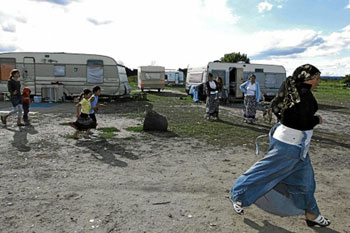

Surely it is the children, unlike nothing else, who can move our hearts the most. But sometimes, when you make a political-communicative use of them, even if it is done with a good end, thought reveals all the misery of the bilateral game. Two very significant cases have been reported in the media in recent weeks.
The saddest thing is what happened to the white, blonde girl found in a gypsy camp in Greece. Many media triggered a racist alarm: it is not possible (sic) for a girl with this type of phenotype to be gypsy. As if it were not enough, we have been taught to the people of the world that a blond white child is worth more than the rest of the children, as he is separated from his parents (or kidnapped?). Living is new according to the color of your skin. Of course, if the child is a gypsy, most of the media will ignore him. It is ironic to see how the Roma have been made known as ‘child robbers’, while, as has been repeatedly denounced in the European Parliament, the reality is that Roma children are the ones who most ‘disappear’ relatively from their families.
It did not matter to the Irish institutions how many Roma children are abducted or disappeared, but as the case of the Greek girl spread in the media the Irish police took a child from the Roma families for having yellow hair and clear eyes. Finally, DNA tests showed that the police had stolen their children from their parents. It has later been known that the parents of the Greek girl are two Bulgarian gypsies, but the damage has already been done, most international media have put an extra stone in place to stigmatise an ethnic minority.
Another case was that of the Kosovar gypsy Leonarda. The police arrested him to drive him out of France when he was on a school tour. The children and school binomial has opened up an opportunity to soften the hearts of those who work for the rights of the Roma and those who want to shake the French Government politically. A Basque nationalist politician on Twitter denounced Hollande’s proposal, the French president said that Leonarda could return, but not his family, and for this he underlined the Kosovar character of the girl. But Leonarda and his family were not expelled because they were Kosovars, but because they were Gypsies, which is why they had to flee from Kosovo.
The UÇK guerrillas and the Albanian nationalist extremists began to persecute all kinds of Roma in 1998. After the end of the war, when NATO military forces were in Kosovo, there were robberies, threats, house burning and murders against gypsies and other national minorities. Persecution has continued to feed the flood of refugees from time to time. Before the war, the Roma had 20,000 houses and today there are less than 5,000. It is an endless list of houses burned and destroyed by some Albanian sectors, in the village of Leonarda, in Kosovska Mitrovican, there are 700. Overall, the number of Roma in Kosovo before the war was between 100,000 and 200,000, while today it is only about 40,000. It is therefore right to criticise the French Government for its treatment of the Balkan Roma, but it would not be wrong to denounce where and how the persecution and flight of the Roma in Kosovo and the Balkans began.